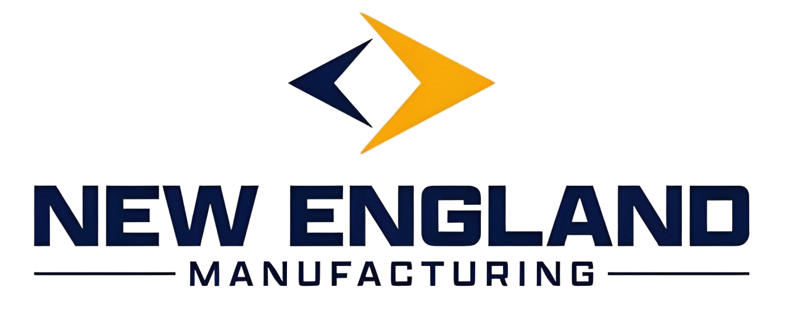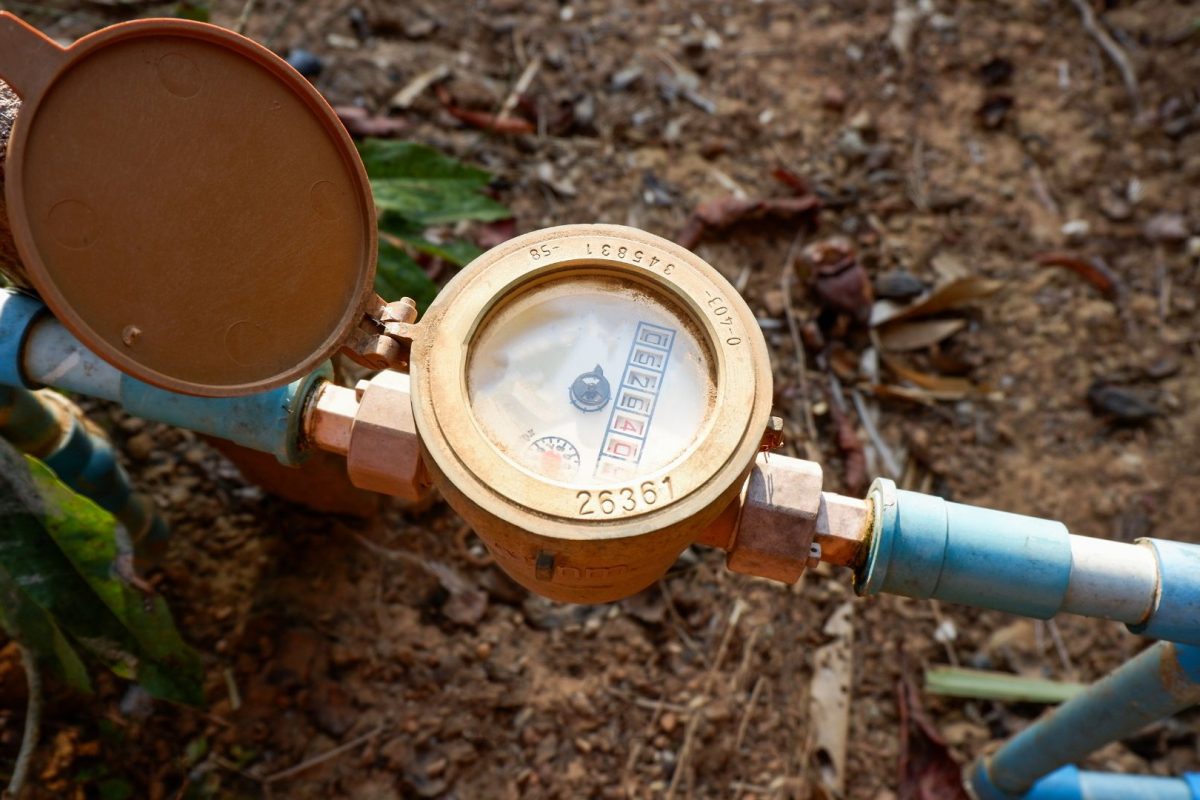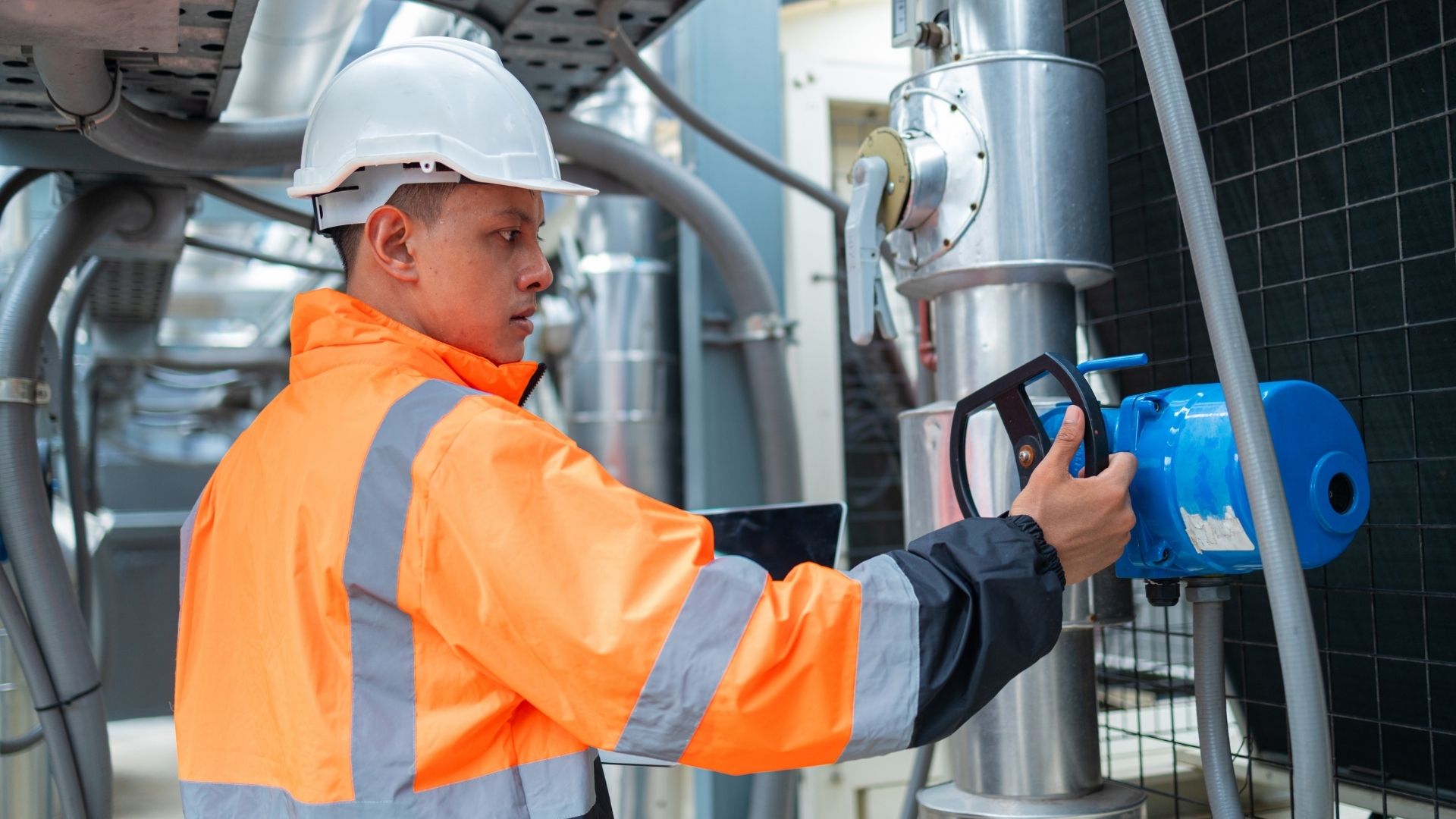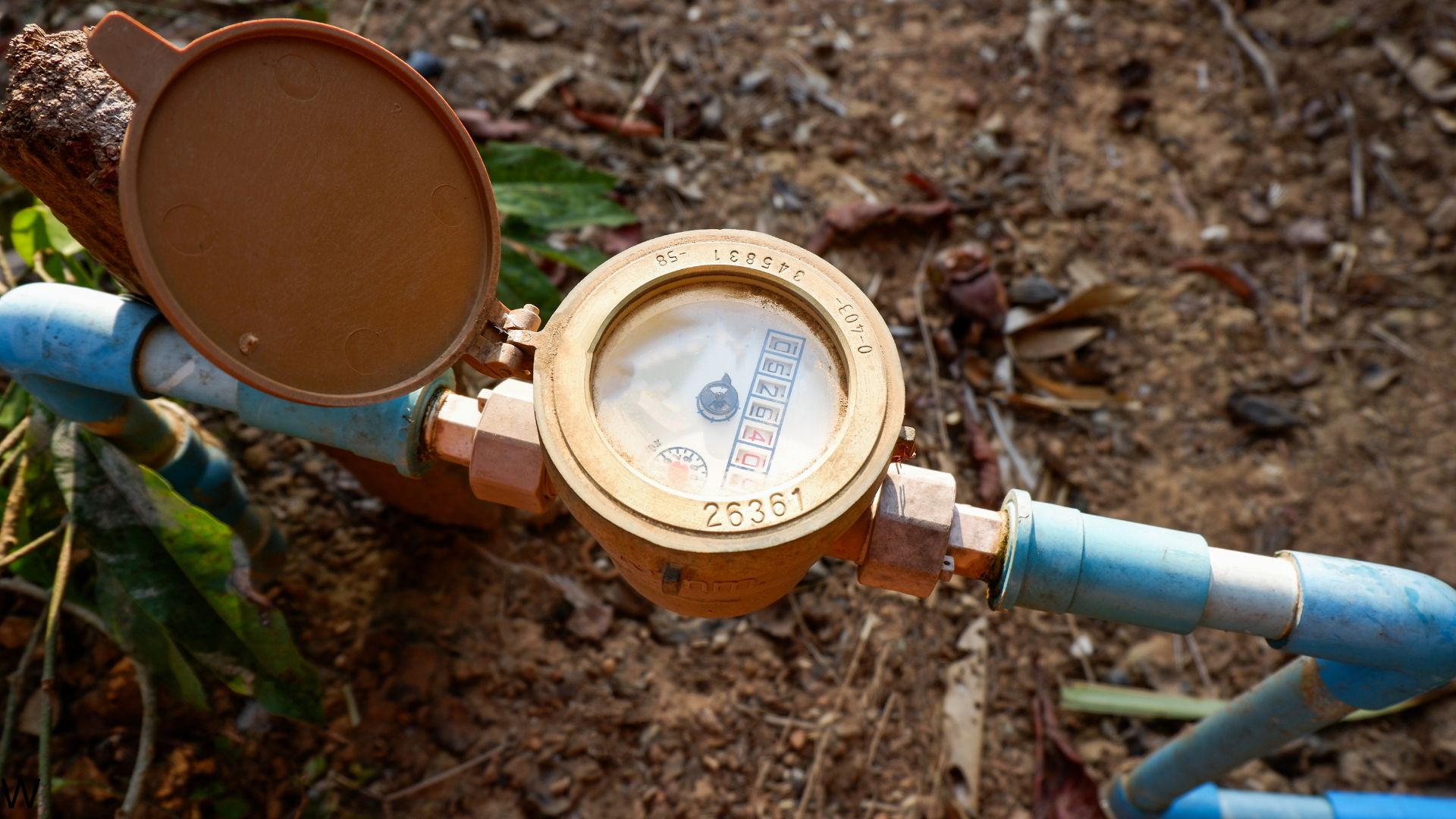Water systems need accurate flow measurement to work properly. And we can say that wrong flow readings can cost thousands in wasted water and equipment damage.
So in this article, we’ve got you covered with all the main water flow meter types you can choose from. You will learn how each type works and which is the best for your specific needs.
What Is A Water Flow Meter?
A water flow meter is basically a device that measures how much water moves through pipes. These meters tell you the exact amount of water passing through at any given time.
Water flow meters work by detecting water movement inside pipes and they convert this movement into readable numbers that show flow rate in gallons per minute or liters per second.
Most water flow meters usually connect directly to your pipe system. Some types go inside the pipe and some others attach to the outside without cutting the pipe.
The main job of a water flow meter is to give you accurate flow data because this data helps you to control water usage, detect leaks, and keep your system running smoothly.
Why Is A Water Flow Meter Important?
Water flow meters help you save money by tracking exactly how much water you use. They spot leaks before they become expensive problems that flood your property.
These devices also help you follow local water regulations. Many areas require flow measurement for commercial buildings and industrial facilities.
Flow meters protect your equipment by monitoring water flow to pumps and heating systems. Low flow can damage expensive machinery that needs steady water supply.
Fire hydrant flow tests rely on accurate flow measurement to check system performance. Without proper flow data, you can’t verify if your fire protection system works correctly.
Safety systems depend on flow meters to trigger alarms when the flow drops too low. This early warning prevents equipment failure and keeps your building safe.
Flow meters also help you spot efficiency problems in your water system. Sudden flow changes often mean you have blockages or valve problems that need fixing.
Water Flow Meter Types
Water flow meter types fall into several main categories based on how they measure flow. Each type has different strengths that make it better for certain jobs.
The choice between water flow meter types depends on your pipe size, water quality, and accuracy needs. Some types work better with clean water while others handle dirty water just fine.
- Turbine Flow Meters
Turbine meters have a spinning wheel inside the pipe that turns when water flows past. The faster the water moves, the faster the wheel spins.
These meters count how many times the wheel turns to calculate total flow. They work well for clean water systems but can get clogged with debris.
Turbine flow meters give accurate readings for medium to high flow rates. They’re popular for water flow test equipment because they respond quickly to flow changes.
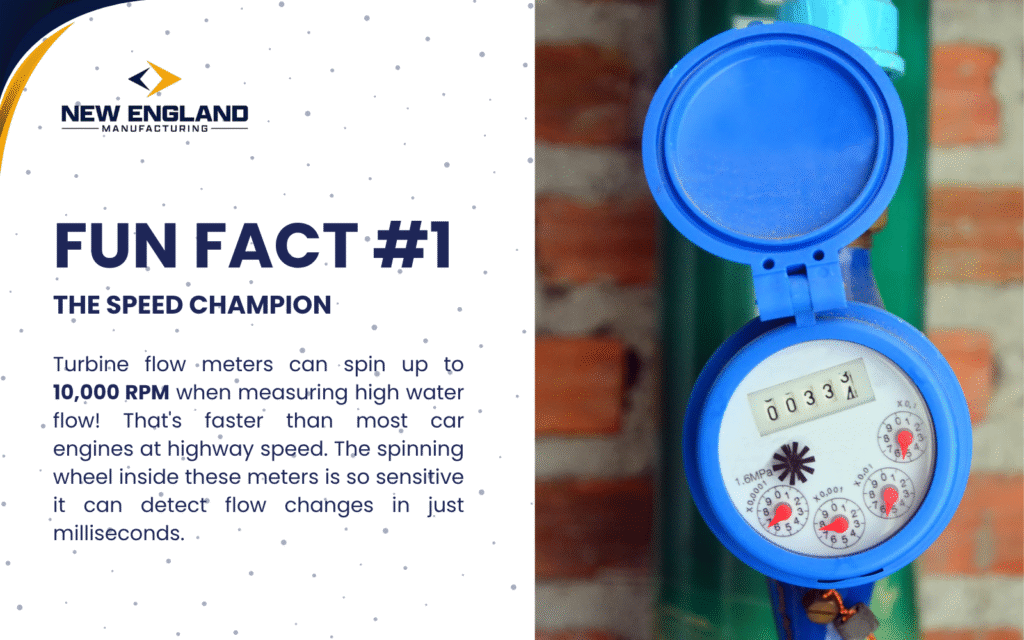
- Positive Displacement Meters
Positive displacement meters trap exact amounts of water in chambers inside the meter. Each time a chamber fills and empties, the meter counts one unit of flow.
These water flow meter types give very accurate readings even at low flow rates. They work well for billing purposes because they measure every drop that passes through.
The main problem with positive displacement meters is they can get damaged by dirty water. Small particles can jam the moving parts inside the meter.
- Paddlewheel Flow Meters
Paddlewheel meters have a wheel with paddles that spins in the water flow. A sensor counts how fast the wheel turns to calculate flow rate.
These meters cost less than other mechanical types but still give good accuracy. They work well for water pressure gauge systems that need basic flow monitoring.
Paddlewheel flow meters can handle some debris in the water. The open design lets small particles pass through without damaging the meter.
| Mechanical Meter Type | Best For | Accuracy | Cost |
| Turbine | Clean water, high flow | ±1-2% | Medium |
| Positive Displacement | Low flow, billing | ±0.5% | High |
| Paddlewheel | Basic monitoring | ±2-5% | Low |
- Electromagnetic Flow Meters
Electromagnetic meters create a magnetic field across the pipe. When water flows through this field, it creates a small electrical signal that the meter reads.
These meters work only with water that conducts electricity. They can’t measure pure distilled water or other non-conductive liquids.
Electromagnetic flow meters handle dirty water very well because nothing blocks the pipe. They’re perfect for wastewater and industrial applications where debris is common.
The meter needs the pipe to be completely full of water to work correctly. Air bubbles can cause wrong readings that make the system think flow is higher than it really is.
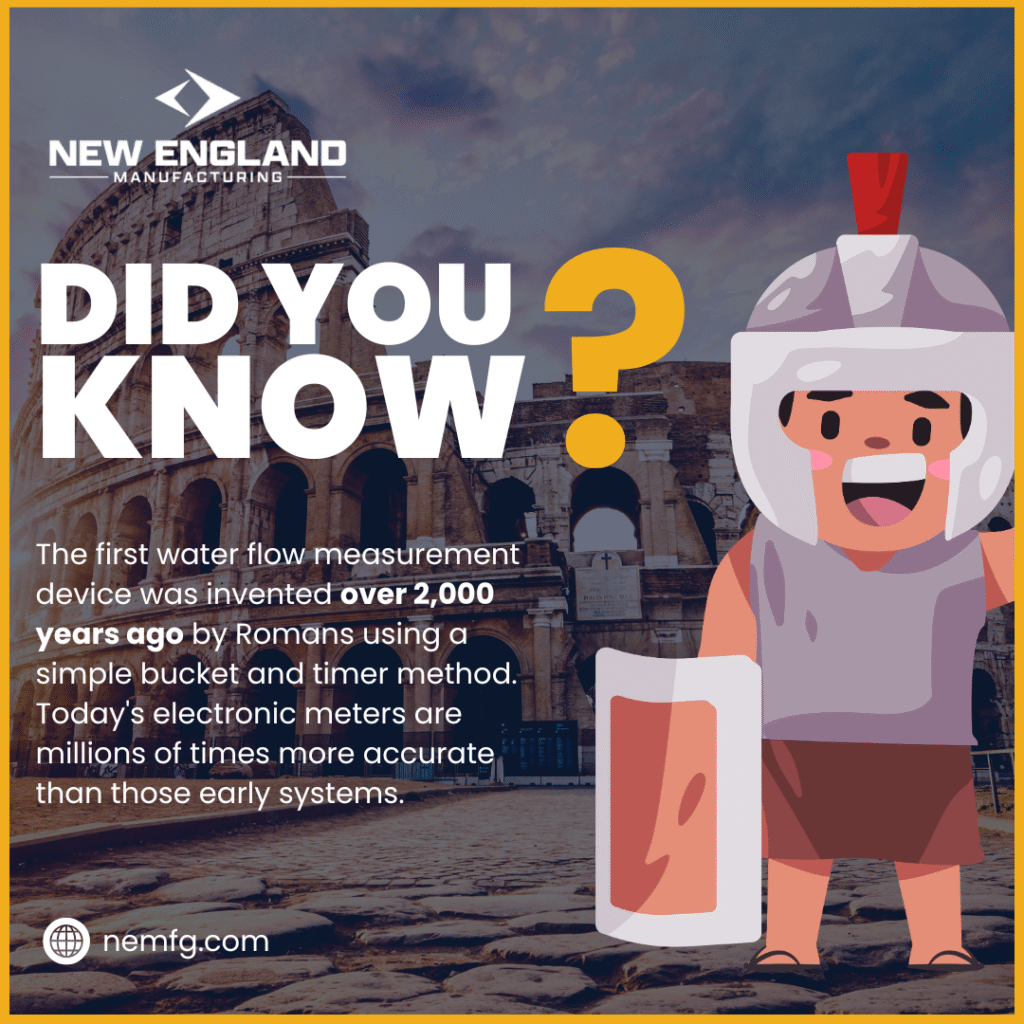
- Ultrasonic Flow Meters
Ultrasonic meters use sound waves to measure how fast water moves through pipes. They send sound signals across or along the pipe to detect flow.
These water flow meter types can attach to the outside of existing pipes. You don’t need to cut the pipe or stop water flow to install them.
Clamp-on ultrasonic meters work great for fire pump testing because you can attach them quickly without system shutdown. They give instant flow readings for testing purposes.
Some ultrasonic meters go inside the pipe for better accuracy. These types cost more but give more precise readings than clamp-on versions.
- Vortex Flow Meters
Vortex meters have a block inside the pipe that creates swirling water patterns called vortices. The meter counts these swirls to calculate flow rate.
These meters work well for steam, gas, and liquid measurement. They handle temperature changes better than most other electronic water flow meter types.
Vortex flow meters need steady flow to work correctly. They don’t give accurate readings when flow starts and stops frequently.
| Electronic Meter Type | Installation | Accuracy | Special Features |
| Electromagnetic | In-pipe | ±0.5% | Handles dirty water |
| Ultrasonic Clamp-on | External | ±2-3% | No pipe cutting |
| Ultrasonic In-pipe | In-pipe | ±1% | Higher accuracy |
| Vortex | In-pipe | ±1% | Temperature resistant |
- Thermal Mass Flow Meters
Thermal meters heat the water slightly and measure how much heat the flow carries away. Faster flow removes heat quicker than slow flow.
These meters work well for very low flow rates where other types can’t give accurate readings. They’re often used for leak detection in sensitive systems.
Thermal flow meters need clean water to work properly. Dirt or air bubbles can affect the heat transfer and give wrong readings.
- Oval Gear Flow Meters
Oval gear meters have two oval-shaped gears that turn when water flows between them. Each turn moves an exact amount of water through the meter.
These water flow meter types give very precise readings for thick liquids like oil or syrup. They also work well for clean water that needs exact measurement.
The gears can get damaged by dirty water or debris. Regular cleaning helps keep these meters working accurately for years.
- Target Flow Meters
Target meters have a disk in the pipe that water pushes against. The meter measures how hard the water pushes to calculate flow rate.
These meters handle very dirty water and thick liquids that would damage other types. They’re tough enough for industrial waste water and chemical processing.
Target flow meters cost more than simple mechanical types. They’re worth the extra cost when you need to measure difficult liquids that destroy other meters.
- Smart Water Flow Meters
Smart meters have built-in computers that store flow data and send alerts when problems happen. They can detect leaks, unusual usage patterns, and meter malfunctions.
These meters connect to your phone or computer so you can check flow data from anywhere. Some types send text messages when they detect leaks or other problems.
Smart water flow meters cost more upfront but save money by catching problems early. They help prevent water damage and reduce utility bills through better monitoring.
- Wireless Flow Meters
Wireless meters send flow data to a central computer without running cables. This makes installation easier in buildings where running wires is difficult.
These water flow meter types use radio signals or cellular networks to transmit data. Battery-powered versions can work for years without external power connections.
Pressure gauge calibration often includes wireless data transmission for remote monitoring. This helps maintain accurate readings across large facilities.
| Smart Meter Feature | Benefit | Typical Cost Increase |
| Data logging | Track usage patterns | 20-30% |
| Leak detection | Early problem alerts | 15-25% |
| Wireless connectivity | Remote monitoring | 25-40% |
| Phone app integration | Easy access to data | 10-20% |
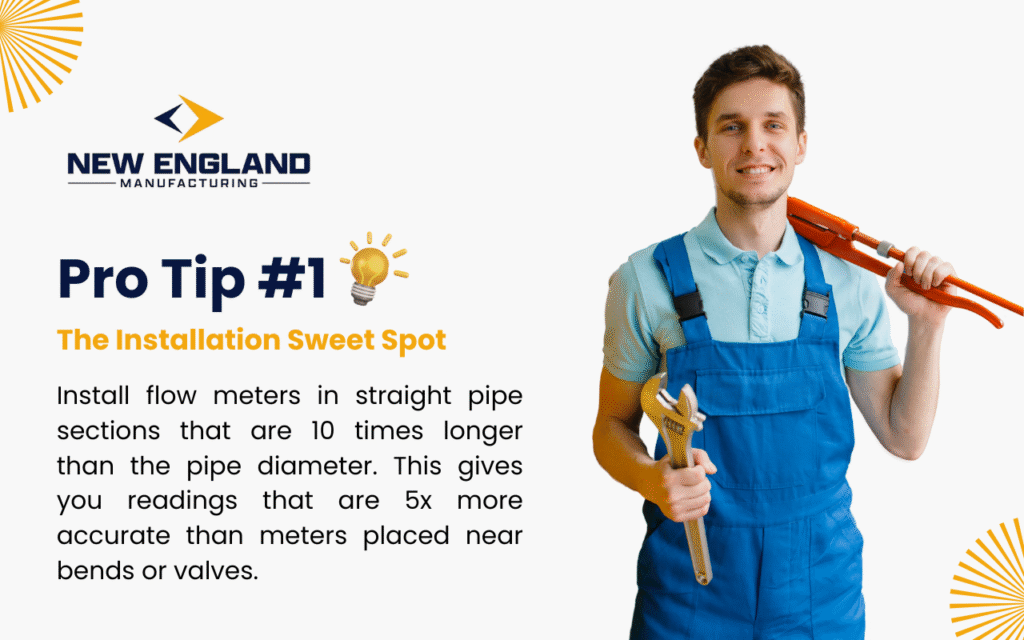
How To Choose the Right Water Flow Meter Type
The best water flow meter for your system depends on several factors which are: pipe size, flow rate, and water quality all affect which type works best.
Small pipes under 2 inches work well with most meter types. Large pipes over 6 inches may need special meters designed for high-volume flow measurement.
Water quality matters a lot when you pick a water flow meter. Clean city water works with any type, but dirty water limits your choices to specific designs.
- Flow Rate Considerations
Different water flow meter types work better at different flow speeds and very low flow needs special meters that are used to detect small amounts of movement.
High flow rates can damage delicate meters which are not designed for fast-moving water. Check the meter’s maximum flow rating before installation to avoid problems.
Fire hydrant testing often involves very high flow rates that need robust meters. Standard residential meters can’t handle the volume from fire protection systems.
Variable flow rates need meters that stay accurate across a wide range of speeds. Some types work well only at steady flow rates.
- Installation Requirements
Some water flow meter types need special installation conditions. For example, electromagnetic meters need full pipes and ultrasonic types need specific pipe materials.
Straight pipe sections before and after the meter help most types to give accurate readings. Bends, valves, and fittings near the meter can cause wrong readings.
Pitot tubes need long straight sections to work properly for flow measurement, knowing that the installation requirements affect which meter type you can use in tight spaces.
Access for maintenance should factor into your choice of water flow meter types because some types need regular cleaning and some others can work for years without service.
- Budget and Maintenance Costs
Maintenance costs add up over time and should factor into your decision. Water flow meters with moving parts need more service than electronic types with no moving components.
Calibration requirements are also a key component that affect long-term costs for different water flow meter types. Some types need annual calibration while others stay accurate for many years.
You need to know that calibration services help you to maintain accuracy for critical applications. Professional calibration costs more but prevents expensive mistakes from wrong readings.
| Cost Factor | Mechanical Meters | Electronic Meters | Smart Meters |
| Initial cost | Low | Medium | High |
| Installation | Simple | Moderate | Complex |
| Maintenance | High | Low | Medium |
| Calibration frequency | Annual | 2-3 years | 3-5 years |
Water Flow Meter Applications
Different industries use water flow meter types for various purposes. Understanding these applications helps you pick the right meter for your specific needs.
- Municipal Water Systems
Cities use large water flow meters to track how much water enters and leaves treatment plants. These meters help manage water resources and detect system-wide leaks.
Distribution networks use smaller meters to monitor flow in different neighborhoods. This data helps utilities balance supply and find problems quickly.
Water pressure gauge systems work with flow meters to give complete information about water distribution performance.
- Industrial Applications
Factories need accurate flow measurement for cooling systems, process water, and waste management. Different water flow meter types handle various industrial liquids and conditions.
Chemical plants use special meters that resist corrosive liquids. Food processing facilities need sanitary meters that won’t contaminate products.
Power plants use large flow meters to monitor cooling water systems. These meters help prevent equipment damage from low flow conditions.
- Commercial Buildings
Office buildings and shopping centers use flow meters to track water usage and detect leaks. Smart meters help building managers reduce utility costs.
Hotels and restaurants need flow monitoring for hot water systems. Proper flow measurement helps maintain consistent water temperature and pressure.
- Fire Protection Systems
Fire sprinkler systems use flow meters to detect when sprinklers activate. This triggers alarms and emergency response procedures.
Fire pump testing requires accurate flow measurement to verify system performance. Different water flow meter types work better for testing versus permanent monitoring.
Standpipe systems in tall buildings need flow meters to verify adequate water supply reaches upper floors during emergencies.
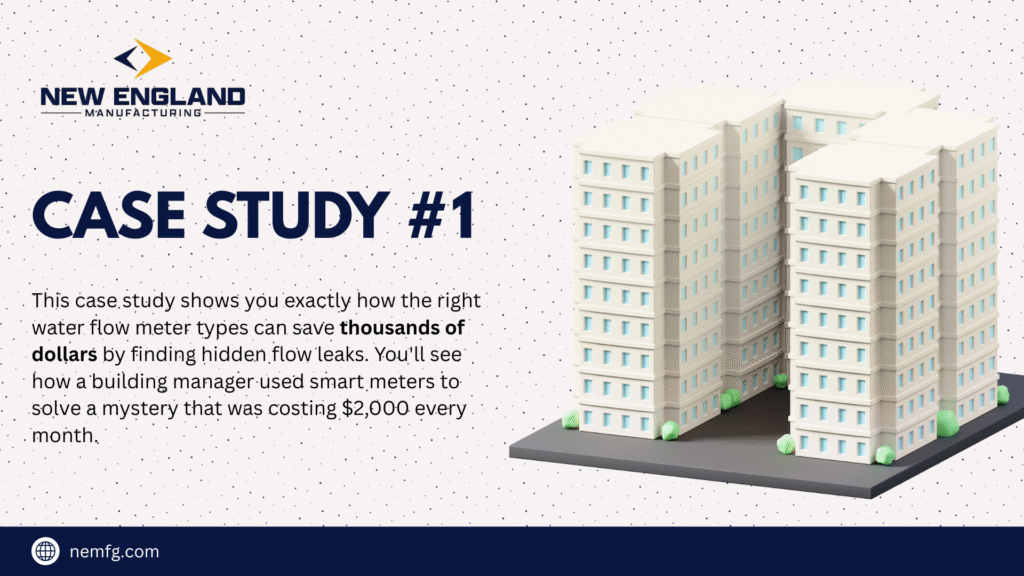
Case Study: Office Building Flow Meter Upgrade
Let’s suppose that a 15-story office building had high water bills and suspected leaks somewhere in the system. Unfortunately, the building manager couldn’t find visible leaks but water usage kept climbing.
The facility installed smart water flow meters on each floor to track usage patterns. The meters revealed that the 8th floor used three times more water than similar floors.
Investigation found a broken pipe inside a wall that had been leaking for months. The smart meter data pinpointed the exact location, saving thousands in exploratory work.
After repairs, the building saved $2,000 per month in water costs. The flow meters paid for themselves in just six months through leak detection and usage optimization.
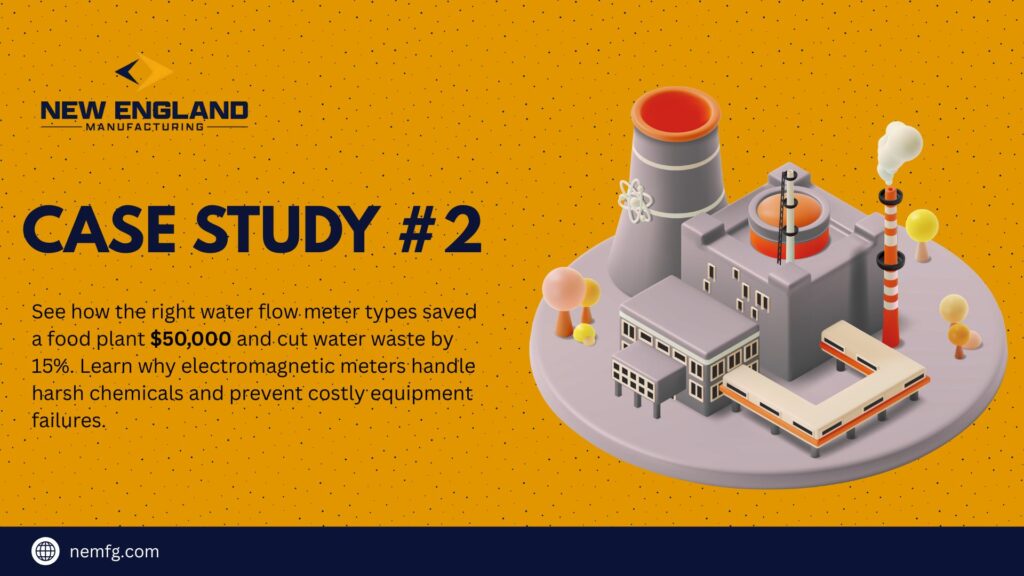
Case Study: Manufacturing Plant Flow Monitoring
Let’s take another example of why water flow meters are very important: A food processing plant needs to monitor water flow for several production lines. Each line required different flow rates for proper food safety and quality.
The plant chose electromagnetic water flow meter types because they could handle the cleaning chemicals used in food processing. The meters resisted corrosion from sanitizing solutions.
The flow monitoring system caught a pump failure before it affected production. Early detection prevented food spoilage that would have cost $50,000 in lost products.
Monthly flow data helped the plant optimize water usage and reduce waste by 15%. This saved money on both water costs and wastewater treatment fees.
Regulatory Requirements and Standards
Specific industries have as many requirements in terms of the type of water flow meter and where it is installed. The regulations help you to choose the equipment that will comply.
- Building Codes
Most building codes require a flow measurement for large industrial or commercial facilities. The regulations and rules vary between buildings of different types and locations.
Many fire protection systems also specify flow measurement to determine if water supply is adequate. Procedures for flow testing of fire hydrants may also require specific types of meters or levels of accuracy.
Water Conservation regulations in some regions require a flow measurement to determine consumption and waste usage. This regulation also would dictate the type of water flow meter types that may be utilized.
- Industry Standards
Industry standards are published by professional organizations that outline meter accuracy, installation, and calibration. Applying the standards gives you a better chance of reliable performance.
Calibration requirements by application and industry vary considerably, with critical systemic applications needing to be checked at a monthly level to many other applications with checked up to every couple of years.
Maintaining documentation requirements for flow measurement assists regulatory conformity as well as making insurance claims. Always keep records of installation work, maintenance, and calibration.
Cost-Benefit Analysis
Different water flow meter types have varying costs and benefits that affect your return on investment. Consider both upfront and long-term costs when making decisions.
- Initial Investment Comparison
Basic mechanical meters cost $200-800 depending on size and features. These work well for simple monitoring applications that don’t need high accuracy.
Electronic meters typically cost $500-2000 but offer better accuracy and reliability. The extra cost often pays off through reduced maintenance and longer life.
Smart meters with wireless connectivity cost $1000-5000 but can save money through early leak detection and usage optimization.
- Operating Cost Savings
Accurate flow measurement helps identify leaks that waste thousands of gallons per month. Early detection prevents water damage that costs much more than the meter.
Energy savings from optimized pump operation can reduce utility bills significantly. Flow data helps balance system operation for maximum efficiency.
Preventive maintenance guided by flow data prevents expensive emergency repairs. Planned maintenance costs much less than fixing broken equipment.
| Meter Type | Initial Cost | Annual Maintenance | Potential Savings | Payback Period |
| Basic mechanical | $200-800 | $100-200 | $500-1500 | 1-2 years |
| Electronic | $500-2000 | $50-150 | $1000-3000 | 1-3 years |
| Smart wireless | $1000-5000 | $100-300 | $2000-8000 | 1-4 years |
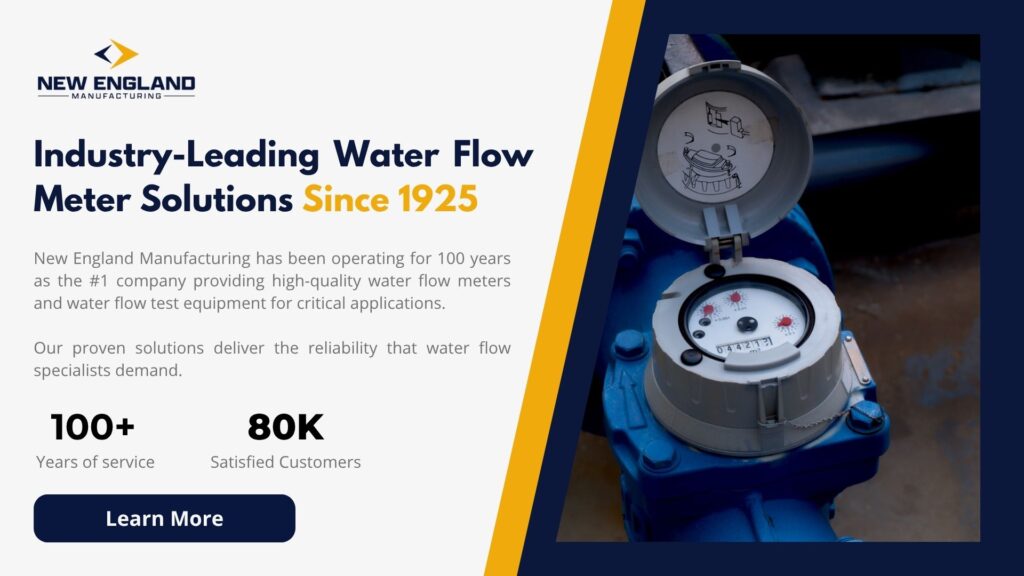
Key Takeaways for Water Flow Meter Selection
Choose water flow meter types based on your specific application needs rather than just cost. The right meter saves money through accurate measurement and early problem detection.
Consider both accuracy requirements and maintenance needs when comparing different options. Electronic types often cost less to maintain than mechanical versions with moving parts.
Plan for future expansion and technology upgrades when selecting water flow meter types. Smart meters offer more flexibility for changing requirements.
Professional installation and calibration help any meter type perform at its best. Work with experienced technicians who understand flow measurement principles and local requirements.
New England Manufacturing, has been operating for 100 years as the #1 company to provide high-quality water test equipment. If you’d like expert help selecting, installing, or calibrating your water flow meter systems, without worrying about accuracy issues or measurement failures, become part of our 80k satisfied customers by emailing us at sales@nemfg.com and by giving us a contact.
